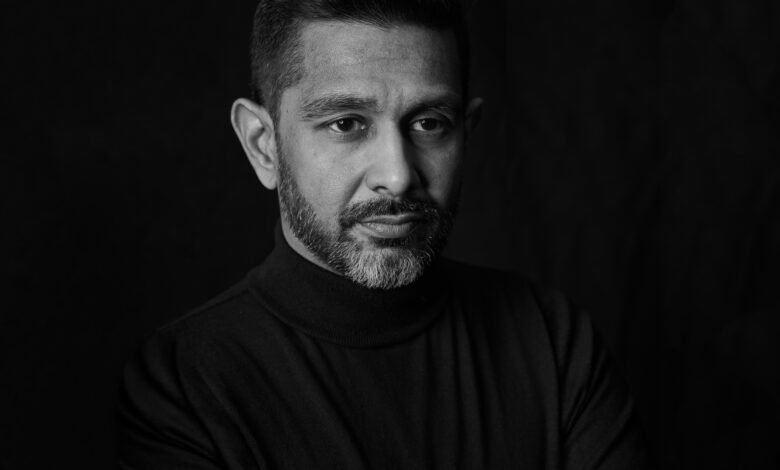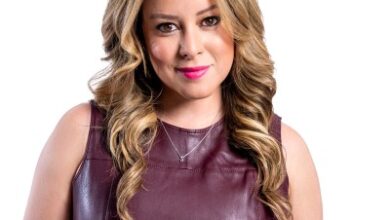Pioneer Behind The Lab Grown Diamond Marketplace, A Founder’s Story with Amish Shah

Amish Shah, president of ALTR Created Diamonds, is the undisputed creator of the lab-grown diamond marketplace. After gaining experience, through his family business, in the diamond industry, and in fine jewelry at an early age, he joined R & R Grosbard Inc. in New York in 2001 and helped transform it into an international powerhouse. Ten years later, Amish took over its operations and led a merger with his family business, conceiving R A Riam Group Inc. in New York, which includes ALTR Created Diamonds. As the only vertically integrated diamond house growing, manufacturing, designing, and cutting with the world’s finest artisans to create the purest form of diamonds (type-IIa diamonds) known to man. Amish has been committed to advancing the future of jewelry through technological innovations, consumer and jeweler education, environmental initiatives, and utilizing the top industry artisans.
Tell us about your childhood and where you grew up
I was born in India and growing up as a little unusual child, I spent my time with a keen interest in science and math. One enlightening story about me from my childhood would have to be about the game I used to play in the car with my dad whenever we went on trips. Most kids would play with a toy or something. However, my dad would ask me to total up the number on a license plate. I got so good at it that I could pretty much total up any number in seconds of the car passing by. I could tell you how many cars passed by and what was the total number and then keep adding the next cars’ plates as we drove down the road. This passion for math led me to score highest in a state mathematics test in Gujarat, India in 1990 which included 396,000 students. My passion took me to a major moment where, at the age of 12, I saw a presentation about the future of computers by the Indian Institute of Computer Science. Most of my peers at the time didn’t even know what it was, what it was called, or what it was all about. But one kid kept raising his hand and asking them questions from; how do you print? How do you code? After the event, they asked me to come to see them with my dad. I immediately thought I was in trouble. To my relief, they asked my dad to enroll me in the program. Fast forward six months later, and I was teaching in the institute. I had started learning to code, which completely engulfed me. I waited for school to end so I could go there. It started out as a 30–45-minute class followed by 30 minutes of practical work. That quickly morphed into 3 hours a day, five days a week. By the end of six months, I was assembling computers, and hardware and was teaching how to code. That’s how it all started. That year I wrote a book on coding and wired the phone lines of a ten-story building. I enjoyed the work immensely. I don’t think I went out to movies and watched cartoons as much as most kids might have done, but I wouldn’t have changed anything about it. Growing up in a business family, all my interests were considered fun. So, in 1992, when I was 17 and offered a scholarship to go to London or America by two institutes and study further, my grandfather said that I was born into a jewelry family and that I was destined to stay in jewelry. And that was the end of my studying as I embarked on my career in the diamond industry. I never went back to computer school. I did however end up attaining my master’s in computer science from home study.
How did you get started as an entrepreneur?
In 2001, under the blessings of my grandfather, I left the family business looking to do something on my own. I met a family in New York that happened to be in the jewelry business. So, I left the jewelry business and landed right back in the jewelry business. I started in the back room hoping to bring a positive change to the company. I quickly realized that the company had 54 people and just two computers. As a computer geek from the eighties, to find out that my new job had so little access to technology I found it to be a tough journey. In the first year, they fired me three times trying to bring change. Though I would always be rehired on the same day. Which meant I never had to go home fired. I was now 22 years old by the third time they fired and rehired me and they gave me an opportunity in one of the meetings to pitch them an idea. I told them I could prove how I could lower their cost of production by over 50% and improve their product. The owner gave me seven days. Eleven days later we already started our first new product line based on my idea. I started by innovating with machines and brought in the best of workmanship from Germany, China, Thailand, and more. I had secured the business owner’s trust which gave me the opportunity to explore and innovate. This is what led me to the lab-grown diamond industry in 2005. I came across someone who claimed to be able to grow diamonds. With all my past experience and passion for technology, this excited me like a kid in a candy store. So, I convinced the owners to work with me on this project. After only six months, we were able to launch the world’s first lab-grown diamond jewelry line under the Firefly collection on June 1st, 2006. The industry responded with laughter and everyone told me that it would never work. While I admit it was a very rough start. For two years we struggled until we finally had to put the project on hold in 2008. But we were not gone for too long. In 2011, when I took over the company from the owners with my brother. I had not lost faith in the possibilities of lab-grown diamonds, so we decided to get back into it. By 2014 we were growing our very first white diamonds. The only difference was this time we did not bring the conversation to the industry but rather to the consumer. We decided to let them tell us directly if they wanted the product or not. In 2016, ALTR Created Diamonds was born. It had taken ten years from the first lab-grown diamond collection we created, but we secured our first retail footprint with Borsheims, a Berkshire Hathaway company, America’s largest fine jewelry store. When we opened that year, we were not screaming lab-grown but rather disruption and change. At the major JCK event showcasing our launch, they didn’t even know how to categorize us or where to put us on the floor. We ended up as the only fine-created jewelry diamond brand allowed on the main floor of the bridal section. Even to this day, we are the only luxury fine jewelry brand with created diamonds granted space on the main floor.
What is one business lesson you would tell a startup founder?
The simplest answer to this is to surround yourself with the right people and have faith in your passion. I think a lot of startup founders when they get started, they have immense trust in their own passion. However, as time passes, this can fade or be chipped away due to external factors and the stress to succeed. You must give yourself time. With that allotment to struggle and learn, you can find the path to success while surrounded by the right people who share your dream. Don’t let people discourage your vision. When we were getting ALTR off the ground, I made it very clear that I would change the future of our industry. As saw it clearly laid out in front of me. I knew that it would only take time before the consumer would start to ask themselves, “why mined diamonds?” And it was not about changing just one aspect of a business, but about how the diamond industry would be changed forever. Nobody could deter me, and it is that determination that startup founders need. In the end, it is about challenging the status quo. Which always excites me. Even though I was born into the diamond industry, I tried jumping ship three times due to the fact that the industry does not like change, or really allow it. This was clear with the fact that at the industry conventions the organizers were against allowing us a booth as they were nervous about upsetting the Goliaths of the industry. It was our determination to succeed and our passion that kept us in the fight. There was no giving up. Now, over the last two years, we have seen every one of the industry leaders who scoffed at our emergence begin to enter the lab-grown diamond space. They may not have wanted this marketplace to even exist, but despite trying to keep us from growing, the consumer has made up their mind for them. And they have said it loud and clear; we want lab-grown diamonds.




